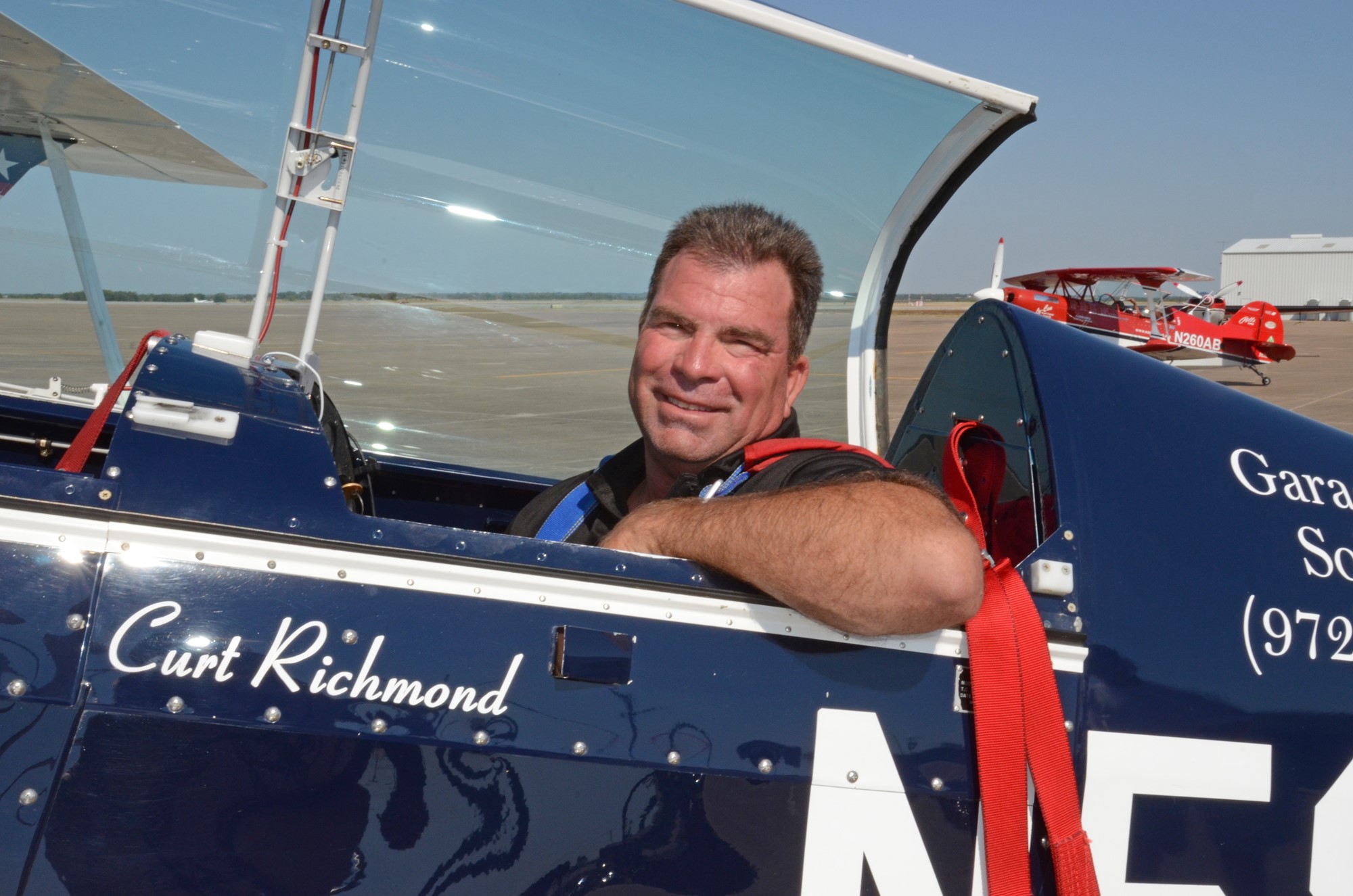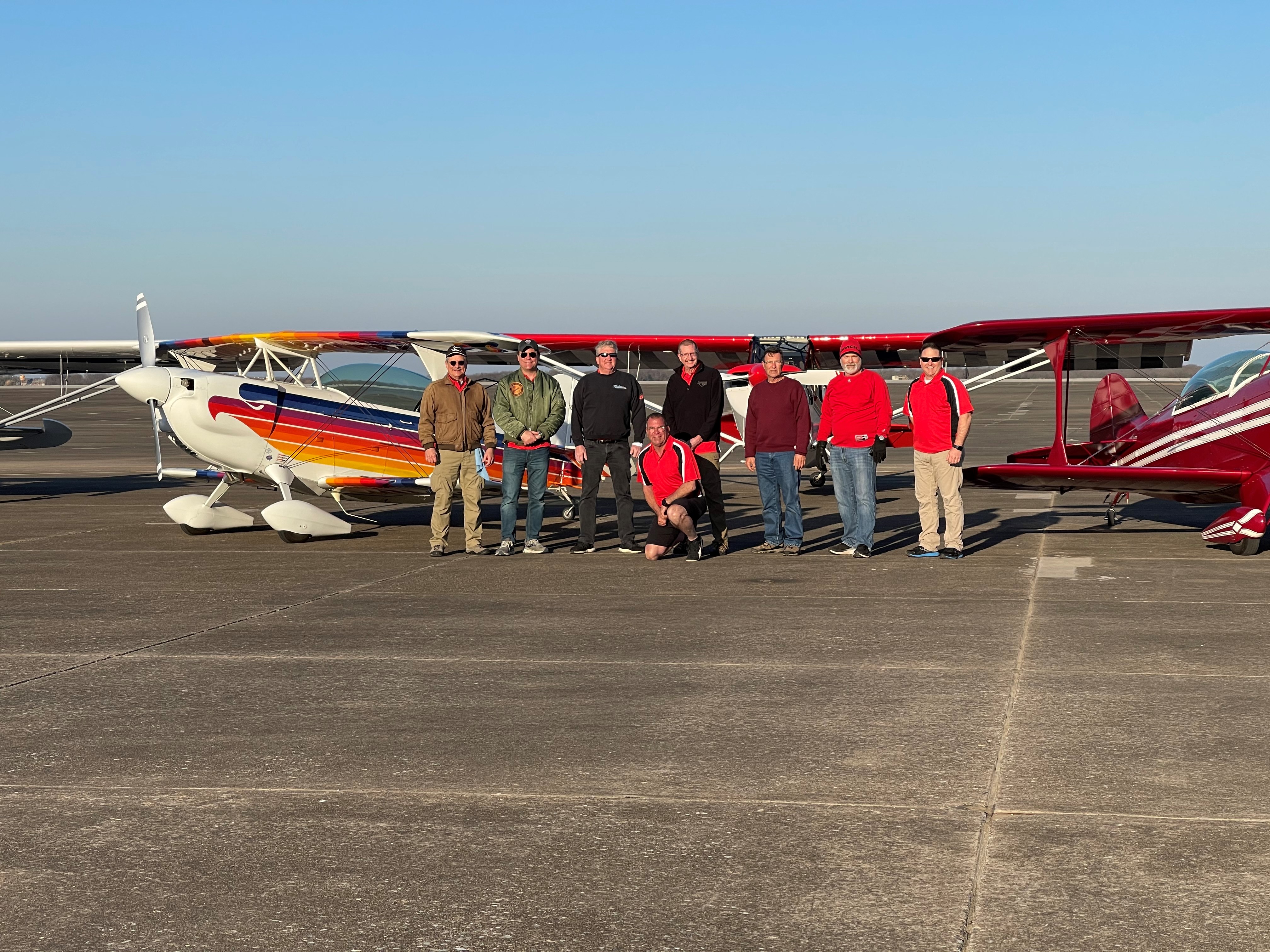
IAC Chapter 24 hosts a fly day every second Saturday of the month, weather permitting.
I noticed that several pilots who planned to compete in Primary and Sportsman categories were having some problems with some of the basics of competition. Others that had already participated in one or more regional contests, did not have very much coaching if any at all. I remember when I was a new competitor and the many things that I did not know. I have never thought that our sport spent enough time or resources to help the newcomer. I thought that I could help them, so I offered a camp to these individuals. I tried to limit the class to six pilots, I didn’t have the heart to turn someone down, so we ended up with seven.
I felt like I could help them with the basic rules and procedures competing in our sport and tips on how to fly the sequences and obtain better scores. So, we started with basic knowledge items, All about briefings, What is involved in the tech inspection, The box, What does climb in the box mean? Why, how to fly low lines, Radio communications (Don’t speak until spoken to.), ETC. I also planned to focus on their goals and needs based on their aircraft capability and their skill level. I also hoped to instruct them in ways to understand what the judges are looking for such as presentation to the judges while using wind correction, entry into the box and improving their individual maneuvers.
Prerequisites for the course were:
1. Be qualified to operate their aircraft solo or bring a safety pilot with them
2. Be able to take off and land in a crosswind
3. Have “G” tolerance appropriate to their category
4. Have an understanding of the Aresti catalog
5. Have spin training in their particular aircraft
6. Be able to safely perform the maneuvers in their category

We provided free hangar space and a discounted rate at a popular hotel in the area. We started the camp at 9:30 am on Friday, March 19th with an introduction to aerobatic competition and then an initial flight, lunch, individual discussion, a scored sequence flight and then dinner and discussion.
Saturday was a similar schedule and Sunday we finished with a critique and a final scored sequence flight. We then compared the scored sequence flights and I was very happy with the results, the pilots showed a definite improvement in their scores over the first day’s flight. These flights were scored by a CIVA judge.
A couple of comments from pilots that I received after the camp….
“When I saw the amount of time that Curt spent with each of us, I understood why he wanted to keep the camp small. No matter what your skill level, Curt offered his experience and skills and how we could apply them to our competitive aerobatic flying. JH
“Curt laid out the schedule of events and the learning objectives in a simple format so we always knew what we were doing and what was coming next. Curt set us up for success by establishing a comfortable and welcoming atmosphere right from the start. We all had great fun and fellowship while everyone was visibly improving.” MW
“Curt really took his time with us. At camp my confidence began to grow. I noticed that I was more relaxed in the box and flew better as a result. Much was learned during the cocktail time and dinner discussion. It was also great to have world class judges in Mike Gallaway and Curt judging us. EK (I might add that this pilot won the Sportsman category at Edna, Texas.)
I had a great time, learned a lot from my students and I plan to do it again next year.

